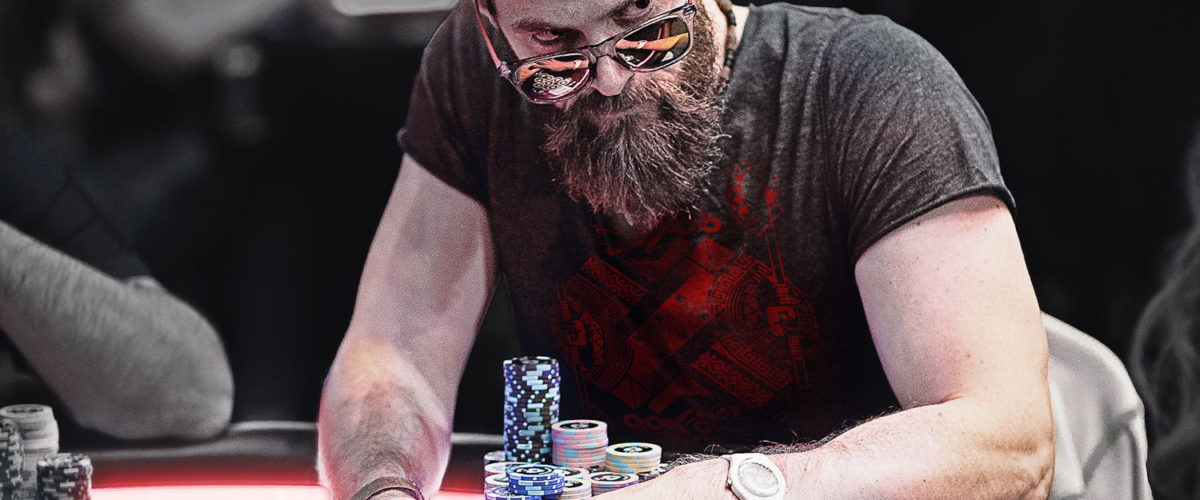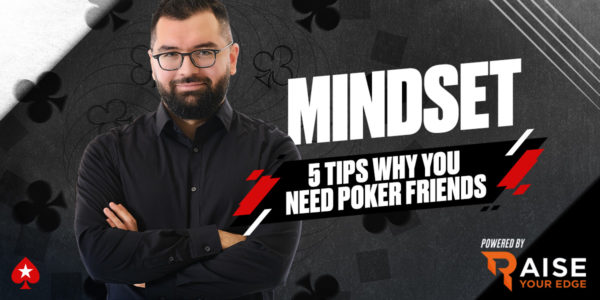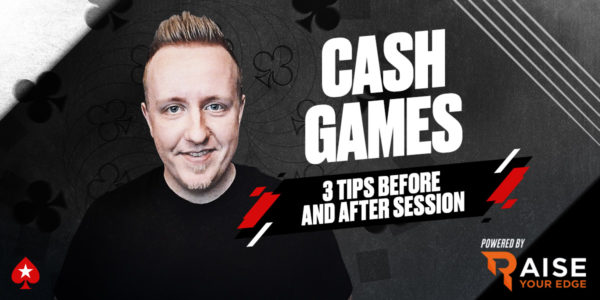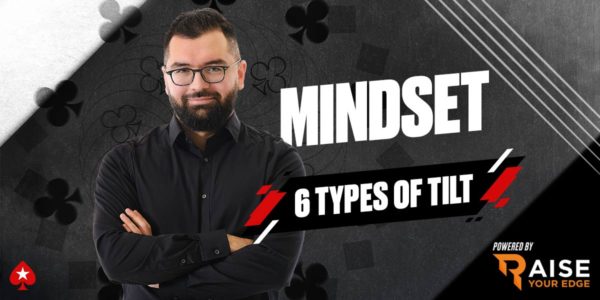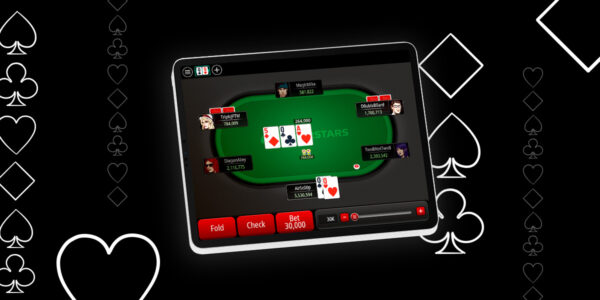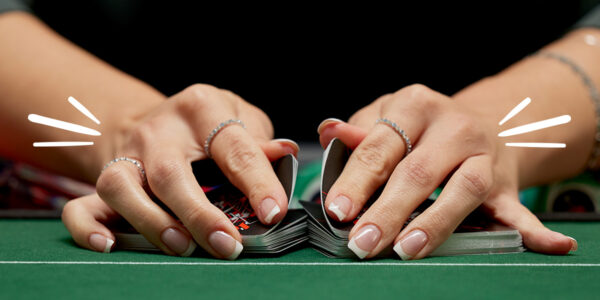The Game Theory of Board Texture: Part 5 – Double Broadway and Flush Draw
Understanding this next flop requires combing some of the factors from earlier episodes. We saw last time that when the flop is higher we might want to polarise our betting range because we have a lot of stable (non-vulnerable) showdown value hands that want to check behind due to having no need to protect their equity. On the last flop of A♥️9♥️4♠️, we had no need for big bets because we had no overpairs to give us a big nut advantage. Our once powerful big pairs had been tainted by Villain often making top pair. This led to us making small bets, not big ones.
Today, we take our first plunge into how to build our strategy hand class by hand class as the Button (BU) on the flop. Instead of just describing the general shape of our C-Bet range, we will be getting our hands dirty with hand values and how they should play in theory.
Meet the Flop – K♠️J♠️4♦️
When we add the second high card to the flop, BU’s range gets a further equity boost, now coming in as a 54% equity favourite. This is a very substantial range advantage and so it should not come as a surprise that we bet more frequently on this texture than we did on the A♥️9♥️4♠️ flop where our equity was only 53%. Our betting frequency according to the solver has gone up from 45% to 54% of the time. This 9% increase is due to the fact that our bluffs will be more profitable on this flop since it is worse for Villain’s range, forcing him to fold more often. He folds 32% of the time in game theory to a one third pot-sized bet even though it only needs to work 25% of the time.
It is very profitable to bluff this flop even with hopeless hands, but that doesn’t mean that we always need to bluff. Checking is also profitable with air because we can always bluff later. Since some of our medium strength stuff wants to check here, it makes sense to delay some of our bluffing to the turn or river for balance purposes.
The overall flop strategy is once again a polarised one where we mainly bet with value hands and bluffs. This is typical on flops where our medium hands are high pairs that don’t need to deny equity – in this case, hands like TT have almost no reason to bet. Here is the solver’s recommendation for BU’s flop strategy.
Hands in Red bet 75% pot.
Hands in Pink bet 33% pot.
Hands in Green check.

Of course, much of this depends on suit. Our betting frequency is much higher with A ♠️6 ♠️ than we will with the other suits.

Simplifying a Strategy
When you’re new to poker, trying to make sense of a strategy from a solver will be difficult enough. Trying to implement that strategy successfully in real time will be near impossible. For this reason, we want to simplify the strategy in order that using a solver output becomes useful for us. We do not want our conclusions to be esoteric and unimplementable.
There are a few steps we can take to simplify and digest this output into something more manageable – into something that will not scare us away from ever studying poker theory again!
- We can remove a bet-size option and simply go with the most commonly used one. In this case the smaller bet is slightly preferred with most hands and so we will use only 33% pot when we choose to bet. We do need to rerun the simulation in the solver if we do this.
- We can also group hands into chunks and then learn how to play each chunk. This is far easier than remembering exact combinations of hands.
- We can approximate frequencies with adjectives. Instead of saying we shall bet AK 65% of the time and KQ 80% of the time, we can simplify to: Usually bet top pair good kicker, but sometimes check.
Simplifying to One Flop Bet-Size Only
I told the solver to remove the big bet option and rerun this situation with only a small bet option for the in-position player. This step generated a new output, using only the 33% pot-sized bet when betting. The hand chart which will now become the basis of our study looks like this:

Now the BU’s betting frequency has jumped up to 65%. This is normal when we remove the big bet option as we do not need to be so polarised when using only small bets. When we risk less money, we can be more active with our protection betting and thin value betting with marginal hands. If we removed the small bet, we would see a decrease in betting frequency as our range would be forced to polarise due to investing more money. It’s just not that profitable to bet a medium hand like 66 with a big sizing, but it can make a profitable small bet to deny Villain’s equity for a cheap price.
Chunking Hands and Approximating Betting Frequency
To make sense of this solver output in a usable way, it is prudent to batch alike hands together under one umbrella and then describe how they should roughly behave on average as a family of hands. The most organised way to do this is to start at the strongest batches of hands possible and make your way through to the weaker ones. If it helps, why not colour code hands batches so that you can glance at a label and see how those hands are acting in this sort of situation? For example:
- Nutted hands like overpairs, two pairs, sets, and top pair good kicker should always bet. They need to build a pot.
- Medium to weak top pairs should mix bet and check with roughly equal frequency.
- Second pair will mix bet and check. Better kickers bet more often whereas weaker kickers are more suited to bluff catching.
- Medium underpairs should almost always check but can bet occasionally. These hands are mostly bluff catchers.
- Straight draws, gut shots, and flush draws will usually bet as a semi-bluff but can do some checking for balance.
- Bad and vulnerable underpairs as well as bottom pair can bet some of the time as a protection bet. These might bluff on later streets on wet runouts where our other bluffs get there.
- Medium Ace-high will usually check. These hands have some showdown value but little chance of improving or winning a big pot.
- Total air hands will mix betting as a bluff and checking at roughly equal frequencies. This is a good board for BU so his bluffs are very profitable. A big mistake that beginners sometimes make here is being too stringent about the calibre of their bluffing hands. You don’t need a draw to bluff on favourable flops.
If you always stick to these colours, and as you become more familiar with the reasoning behind each hand class’s actions, you will eventually be able to simplify your write ups of a strategy to something like:
- Always Bet
- Mix Bet and Check
- Mix Bet and Check
- Mostly Check
- Usually Bet, Sometimes Check
- Mix Bet and check
- Check
- Mix Bet and Check
In time, you will eventually know what every colour means without thinking in the same way that you know the colour of a ripe tomato or a dandelion.
Conclusion
Simplifying a game theory solution is not easy and takes practice. Understanding why hands choose to bet is most of the battle. Next time we shall examine a very extreme sort of board texture and try to apply the skills we have gained in this series to solve it.
Condimentum Nibh
Donec sed odio dui. Cras mattis consectetur purus sit amet fermentum. Vestibulum id ligula porta felis euismod semper. Curabitur blandit tempus porttitor.

